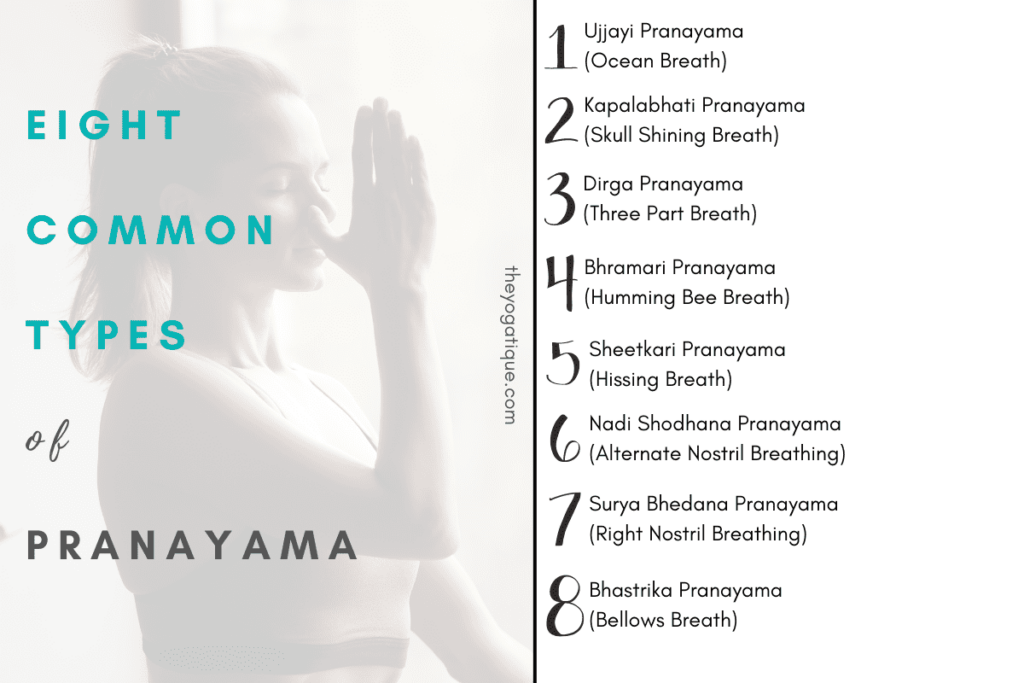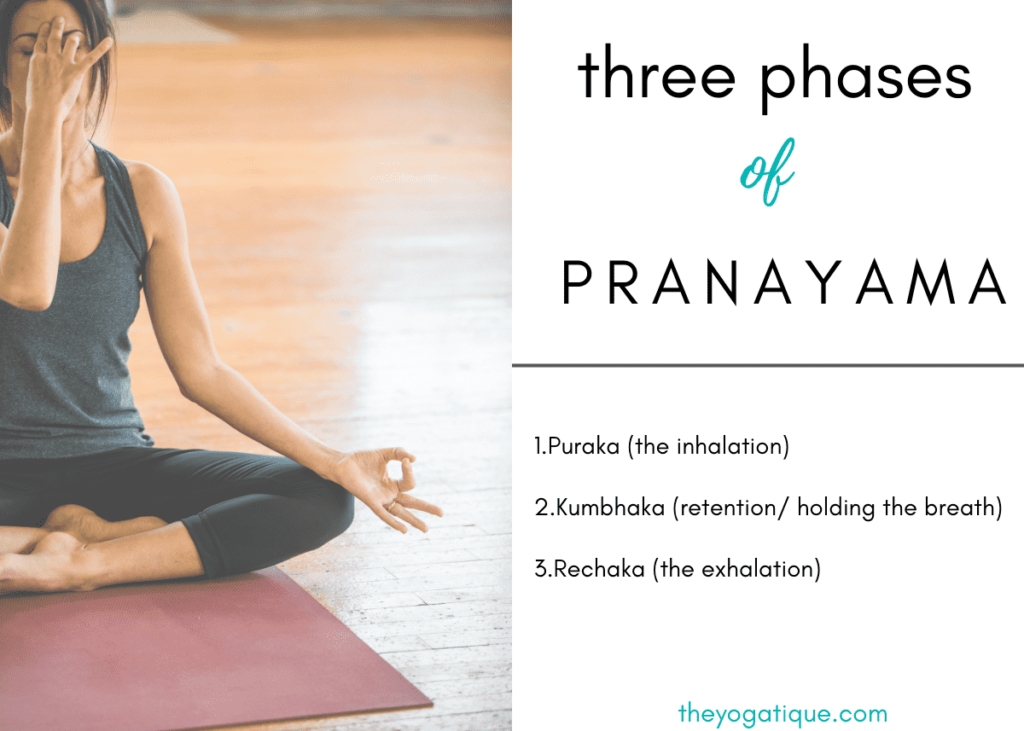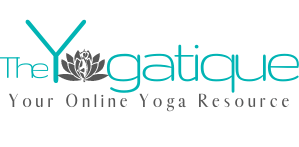If you struggle to stay focused and present, get tired quickly, or are simply curious to learn more about meditative practices, it’s time to learn about the types of pranayama.
Pranayama is a vital tool for controlling the fluctuations of the mind, finding presence on the mat, and finding inner peace in the soul. There is more than one type of pranayama—in fact, there are many.
Pranayama connects us to the most vital energy within us, our breath. It also teaches us how controlling this life force can regulate our energy, improve our mental well-being, and deepen our spiritual connection.
But what exactly is pranayama, and why should you practice breathing techniques? Read on to discover everything you need to know about the different types of pranayama you can try today!
Article content:
(Click any link below to jump directly to section)
What is Pranayama?
In simple terms, Pranayama means actively breathing as you control or extend the inhale and exhale. However, how you do that depends on the specific technique, which we will explore in more detail below. Pranayama is an integral part of yoga practice and is discussed in yoga philosophy and in the Eight Limbs of Yoga.
Pranayama does not necessarily mean slow, deep breathing that is a misconception. Sometimes, it can mean breathing forcefully and rapidly to produce specific effects.
Sanskrit meaning of Pranayama
The Sanskrit term Pranayama is a combination of two words, ‘Prana’ and ‘Ayama.' This is what each of those words means:
- ‘Prana’ means life force, as our breath keeps us alive.
- ‘Ayama’ translates to extending or stretching but can also mean controlling.
Thus, “Pranayama” means lengthening or controlling the life force.
8 types of Pranayama
According to Swami Kuvalayananda, classical Hatha yoga has eight types of Pranayama breathing techniques. Eight types of Pranayama from Hatha yoga are:
- Ujjayi (Ocean Breath)
- Kapalabhati (Skull Shining Breath)
- Dirga (Three Part Breath)
- Bhramari (Humming Bee Breath)
- Sheetkari (Hissing Breath)
- Nadi Shodhana (Alternate Nostril Breathing)
- Surya Bhedana (Right Nostril Breathing)
- Bhastrika (Bellows Breath)
1. Ujjayi (Ocean Breath)
Ujjayi Pranayama is the most common and well-known type of pranayama.
Ujjayi is also oftentimes the first breathing technique practitioners learn in Hatha, Vinyasa, and Ashtanga yoga as it is performed during asana practice, not before or after it like most other types of Pranayama.
Ujjayi is also known as ocean breath because you constrict your throat as you breathe, which creates the sound of ocean waves. Here's how to do Ujjayi:
- With your mouth closed, on both the inhale and the exhale, you should slightly constrict the passage of air in the back of your throat, imagining that you are fogging up a pair of glasses. This should create a soft hissing sound.
- Breathe in and out, with your throat constricted.
During intense asana practice, such as Ashtanga, practicing Ujjayi can help regulate and conserve your energy, preventing fatigue.
2. Kapalabhati (Skull Shining Breath)
Kapalabhati is sometimes referred to as the king of Pranayama as it is the most powerful technique. It is heating, energizing, and cleansing, clearing the mind, lungs, and nasal passages. It also helps to tone the diaphragm and abdominal muscles. Here's how to do Kapalabhati:
- Exhale forcefully by rapidly contracting and releasing the abdomen. Contract and draw the navel inward when exhaling, then release on the inhale, which is passive, before contracting the abdomen again on the next forceful exhalation.
Note that you should do Kapalbhati on an empty stomach.
3. Dirga (Three Part Breath)
Dirga Pranayama is known as the three-part breath, as you inhale and exhale in three parts. It is calming and grounding and helps you improve your breath control and awareness. Here's how to do Dirga pranayama:
- Breathe in ⅓ of your capacity to your belly and pause. Without releasing the breath, breathe in another third to the ribcage. Pause briefly, and then inhale your remaining breath to the top of the chest.
- As you exhale, you first release ⅓ of the air to the chest. Pause, release another third to the ribcage. Pause, and then release the remaining air into the belly.
While most Pranayama exercises are performed seated ( either in a cross-legged position or on the heels), it is best to practice Dirga lying down.
4. Bhramari (Humming Bee Breath)
Bhramari is known as the humming bee breath, as you make a humming sound as you exhale. It has a calming effect on the mind and nervous system and helps to manage anger, frustration, and anxiety. Here's how to do Bhramari:
- Begin by placing your index fingers on your ears and pressing gently on the cartilage between your cheek and ear.
- Take a deep breath in, and then as you exhale completely, make a loud humming sound like a bee while continuing to press on the ear cartilage.
5. Sheetkari (Hissing Breath)
Sheetkari is a cooling breath that helps to lower your body temperature, among other benefits such as reducing high blood pressure and calming the mind. Here's how to do Hissing Breath:
- Keep your mouth closed with the upper and lower teeth touching.
- Bring your tongue to the roof of your mouth, then open your lips (keeping the teeth together) as you create a hissing sound.
Note that you should make this hissing sound on your inhale. After inhaling, close your lips and exhale deeply through the nose.
6. Nadi Shodhana (Alternate Nostril Breathing)
This yogic breathing technique balances the left and right hemispheres of the brain, clears blockages in the energy channels (nadis), and calms the autonomic nervous system. Here's how to do Nadi Shodhana:
- Breathe in through one nostril while blocking off your other nostril with your thumb.
- Exhale through that same nostril before switching and breathing in and out through the other one.
7. Surya Bhedana (Right Nostril Breathing)
Surya Bhedana is similar to Nadi Shodhana but involves breathing in through the right nostril (only) and out through the left nostril (only) rather than alternating.
While Nadi Shodhana balances the energies in the body, right nostril breathing evokes yang energy and warms the body.
8. Bhastrika (Bellows Breath)
Bhastrika is powerful and energizing where both the inhale and exhale are forceful.
Unlike Kapalabhati, which engages the abdominal muscles, bellows breath involves the engagement of the lungs.
However, the breath should come from your diaphragm, with the belly moving in and out as you exhale and the chest remaining still.
You can also include arm movements with this breathing technique to further increase the heating and energizing effects.

Benefits of practicing yogic breathing exercises
There are two widely recognized techniques of Pranayama, “cooling” and “heating”. Here are the benefits of each:
- Cooling: This has a calming effect on the parasympathetic nervous system and promotes relaxation. They are good for destressing, reducing anxiety, clearing the mind, and preparing for sleep.
- Heating Has a stimulating and energizing effect on the body and mind. It boosts energy and enhances focus.
The 3 phases of Pranayama
Pranayama involves bringing concentration and awareness to your breathing, similar to yoga Nidra. According to ancient yogic teachings, there are three phases to practicing Pranayama techniques, which are:
- Puraka (the inhalation)
- Antara Kumbhaka (retention/ holding the breath)
- Rechaka (the exhalation)
Following these stages helps to keep the practice conscious and increases the benefits. This could also be referred to as the order of the Pranayama breathing phases.

Takeaway on Pranayama
Including Pranayama techniques in your yoga practice can enhance your focus and awareness of the present moment by calming the mind and reducing mental activity.
Physically, breathing techniques can relax the muscles to help you go deeper in your yoga postures, while energetically, they clear blockages and prevent fatigue.
FAQ about Pranayama
What is the most common type of pranayama?
The most common type of pranayama is Ujjayi Pranayama. Ujjayi pranayama is the oceanic type breath we use when practicing yoga.
What are the three key processes of pranayama?
The three phases of pranayama are 1. Puraka (the inhalation)
2. Antara Kumbhaka (retention/ holding the breath) 3. Rechaka (the exhalation)
Some online yoga studios, online yoga teacher training programs, and brands that we write about may offer us a small percentage should you decide to purchase after reading our content. Thank you for enabling us to exist!














